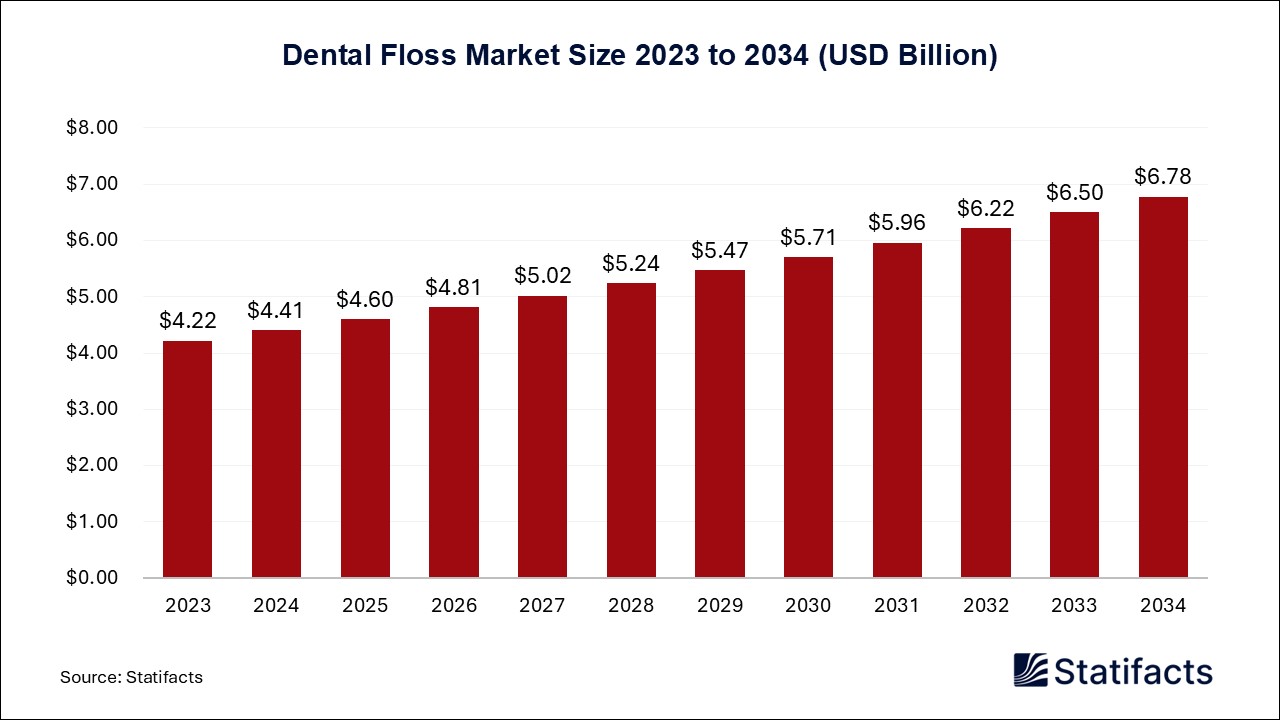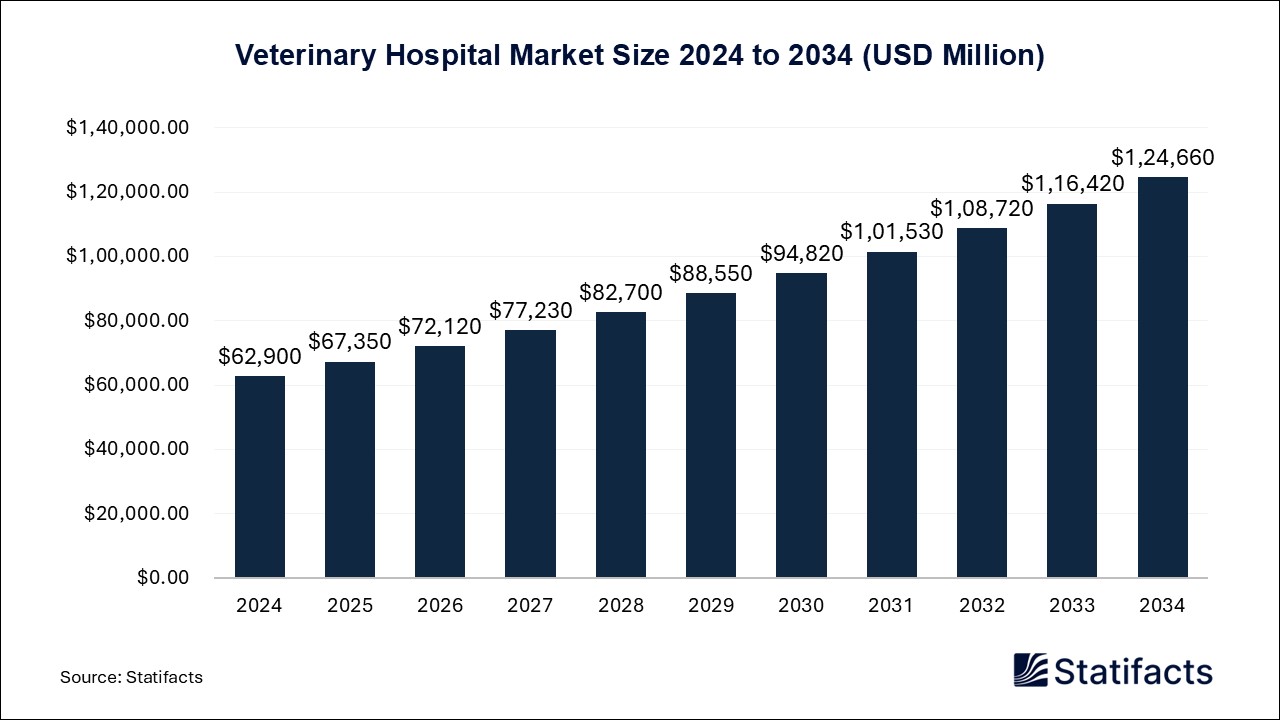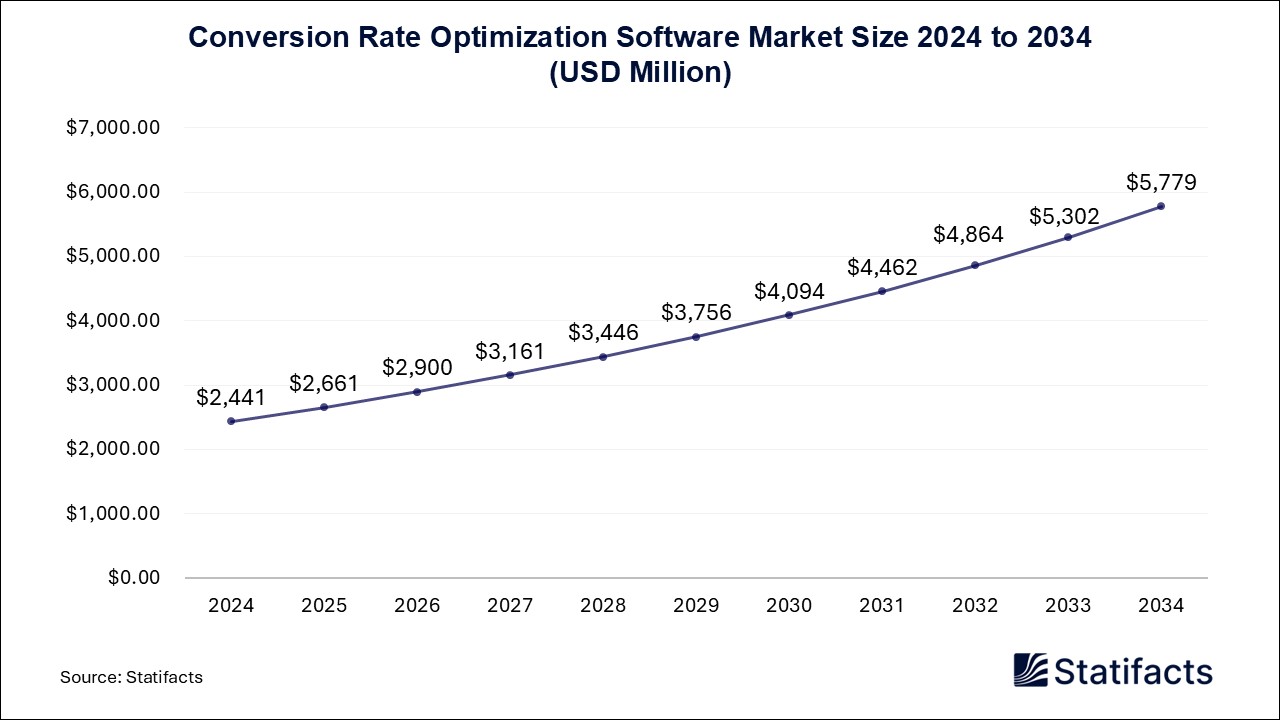
By clicking “Accept All Cookies” you agree to the storing of cookies on your device to enhance site navigation, analyze site usage, and assist in our marketing efforts.
Privacy PolicyThe U.S. medical devices market size is calculated at USD 188.71 billion in 2024 and is predicted to reach around USD 367.77 billion by 2034, expanding at a CAGR of 6.9% from 2024 to 2034.
The U.S. medical devices market refers to the production, distribution, and application of medical devices, which include instruments and machines helping for the prevention, diagnosis, and treatment of diseases. Medical devices in the U.S., the FDA’s definition recognized in the Official National Formulary, or the United States Pharmacopeia, or any supplement to them, intended for use in the diagnosis of disease or other conditions, or in the cure mitigation, treatment, or prevention of disease, in man or animals. The U.S. FDA categorizes medical devices into one of three classes- Class I, Class II, and Class III based on their risks and the regulatory controls needed to provide a reasonable assurance of safety and effectiveness. A medical device is an instrument, machine, tool, test kit, or implant that is used to prevent, diagnose, or treat disease or other conditions. Medical devices range from tongue depressors to heart pacemakers and medical imaging equipment. Medical devices are technologies that interact with the human body to enhance patient health. These technologies can modulate, monitor, and supplement bodily functions and anatomical structures. Medical devices can function inside the body, like implanted pacemakers, or outside the body, like wearable sensors.
| Category | Level of risk to patient | Examples | Type of review before device can be marketed |
|
Class I |
Low |
|
Most devices required only to register; a small share must submit a 510(k) notification. |
| Class II | Moderate |
|
Most devices must submit a 510(k) notification; a small share of devices is required only to register. |
| Class III | High |
|
Devices must submit a PMA application; in the past, a significant number of devices were able to submit a 510(k) notification. |
The rising prevalence of chronic diseases is driving the growth of the U.S. medical devices market. Wearable health devices offer transformative potential for managing chronic illnesses by improving real-time monitoring and patient engagement. Even with significant enhancements in adherence and outcomes, challenges with data accuracy and privacy persist. Connected health devices include blood pressure monitors, thermometers, peak flow meters, pulse oximeters, and scales. Additionally, smartwatches are used in chronic care to track heart rate, steps, and daily sleep duration. For example, continuous glucose monitors (CGMs) have transformed diabetes management by providing real-time glucose readings, leading to more accurate insulin dosing and enhanced glycemic control. Chronic disease management devices include cardiac monitoring devices, fall monitors, glucose or diabetes monitors, insulin pumps, pulse oximeters, and blood pressure monitors.
Growing senior population driving the growth of the U.S. medical devices market. Chronic disorders are common among the people between the ages of 45 and 54. Medical devices for the senior population include hot and cold pads, nebulizer which is devices that are prescribed for seniors or individuals who have asthma, nebulizers, and BP (blood pressure) monitors, which are used to monitor the blood pressure level of seniors at home and glucometer which is a health monitoring device keeps track of blood glucose levels. These devices give seniors autonomy, enabling them to trigger the alarms when they need to, they are in charge. They can sleep, shower, or work in the yard knowing help is a quick button press away. They can get the assistance you want and need, even if it won’t require medical treatment. A medical alert for seniors can provide safety, security, comfort, and peace of mind. Wearables technology for seniors is its ability to monitor health in real-time. These devices help to manage chronic conditions by reminding seniors to take medications, track physical geofencing, and monitor sleep patterns. The ultimate goal of a connected medical device is to provide better care for patients, better outcomes, and at a lower cost.
Increasing importance of real-time data-driven approach for diagnostics and treatment driving the growth of the U.S. medical devices market. In healthcare, access to accurate, real-time data is crucial for improving patient outcomes. IoT devices transform how healthcare collects, organizes, and analyzes this data, allowing caregivers to identify and address health issues more effectively. By analyzing patient data, healthcare providers can identify patterns that indicate potential health risks or complications. This allows for early intervention, more accurate diagnoses, and personalized treatment plans. Real-time documentation is important for decision support and triggering alerts needed to draw attention to patient conditions. Real-time data is information that is delivered immediately after collection. There is no delay in the timeliness of the information provided. It is often used for navigation and tracking.
Published by Kesiya Chacko
| Subsegment | 2024 | 2025 | 2026 | 2027 | 2028 | 2029 | 2030 | 2031 | 2032 | 2033 | 2034 |
|---|---|---|---|---|---|---|---|---|---|---|---|
| Monitoring Devices | - | - | - | - | - | - | - | - | - | - | - |
| Diagnostic Devices | - | - | - | - | - | - | - | - | - | - | - |
| Surgical ENT Devices | - | - | - | - | - | - | - | - | - | - | - |
| Endoscopes | - | - | - | - | - | - | - | - | - | - | - |
| Imaging Devices | - | - | - | - | - | - | - | - | - | - | - |
| Diagnostic Molecular Devices | - | - | - | - | - | - | - | - | - | - | - |
| Drug Delivery Devices | - | - | - | - | - | - | - | - | - | - | - |
| Surgical Devices | - | - | - | - | - | - | - | - | - | - | - |
| Bio Implants and Stimulation Devices | - | - | - | - | - | - | - | - | - | - | - |
| Treatment Equipment | - | - | - | - | - | - | - | - | - | - | - |
| Infusion Pumps | - | - | - | - | - | - | - | - | - | - | - |
| Medical lasers and LASIK surgical machines | - | - | - | - | - | - | - | - | - | - | - |
| Others | - | - | - | - | - | - | - | - | - | - | - |
| Subsegment | 2024 | 2025 | 2026 | 2027 | 2028 | 2029 | 2030 | 2031 | 2032 | 2033 | 2034 |
|---|---|---|---|---|---|---|---|---|---|---|---|
| Gastrointestinal surgery | - | - | - | - | - | - | - | - | - | - | - |
| General Surgery | - | - | - | - | - | - | - | - | - | - | - |
| Diagnostic Imaging | - | - | - | - | - | - | - | - | - | - | - |
| Respiratory | - | - | - | - | - | - | - | - | - | - | - |
| Orthopedics | - | - | - | - | - | - | - | - | - | - | - |
| Cardiovascular | - | - | - | - | - | - | - | - | - | - | - |
| Dental | - | - | - | - | - | - | - | - | - | - | - |
| Neurology | - | - | - | - | - | - | - | - | - | - | - |
| Ophthalmology | - | - | - | - | - | - | - | - | - | - | - |
| Ear-Nose-Throat (ENT) | - | - | - | - | - | - | - | - | - | - | - |
| Nephrology and Urology | - | - | - | - | - | - | - | - | - | - | - |
| Others | - | - | - | - | - | - | - | - | - | - | - |
| Subsegment | 2024 | 2025 | 2026 | 2027 | 2028 | 2029 | 2030 | 2031 | 2032 | 2033 | 2034 |
|---|---|---|---|---|---|---|---|---|---|---|---|
| Hospitals & Clinics | - | - | - | - | - | - | - | - | - | - | - |
| Diagnostic Centers | - | - | - | - | - | - | - | - | - | - | - |
| Research laboratory | - | - | - | - | - | - | - | - | - | - | - |
| Pharmaceutical Companies | - | - | - | - | - | - | - | - | - | - | - |
| Subsegment | 2024 | 2025 | 2026 | 2027 | 2028 | 2029 | 2030 | 2031 | 2032 | 2033 | 2034 |
|---|---|---|---|---|---|---|---|---|---|---|---|
| Diagnostic Imaging | - | - | - | - | - | - | - | - | - | - | - |
| Orthopedic Devices | - | - | - | - | - | - | - | - | - | - | - |
| Cardiovascular Devices | - | - | - | - | - | - | - | - | - | - | - |
| Minimally Invasive Surgical (MIS) | - | - | - | - | - | - | - | - | - | - | - |
| Wound Management | - | - | - | - | - | - | - | - | - | - | - |
| Diabetes Care | - | - | - | - | - | - | - | - | - | - | - |
| Ophthalmic Devices | - | - | - | - | - | - | - | - | - | - | - |
| General Surgery | - | - | - | - | - | - | - | - | - | - | - |
| Dental Devicess | - | - | - | - | - | - | - | - | - | - | - |
| In Vitro Diagnostics (IVD) | - | - | - | - | - | - | - | - | - | - | - |
| Others | - | - | - | - | - | - | - | - | - | - | - |
| Subsegment | 2024 | 2025 | 2026 | 2027 | 2028 | 2029 | 2030 | 2031 | 2032 | 2033 | 2034 |
|---|---|---|---|---|---|---|---|---|---|---|---|
| Hospitals & Ambulatory Surgery Centers (ASCs) | - | - | - | - | - | - | - | - | - | - | - |
| Clinics | - | - | - | - | - | - | - | - | - | - | - |
| Others | - | - | - | - | - | - | - | - | - | - | - |
To get full access to our Market Insights, you need a Professional Account or a Business Suite.

You will receive an email from our Business Development Manager. Please be sure to check your SPAM/JUNK folder too.

You will receive an email from our Business Development Manager. Please be sure to check your SPAM/JUNK folder too.

Our customers work more efficiently and benefit from



